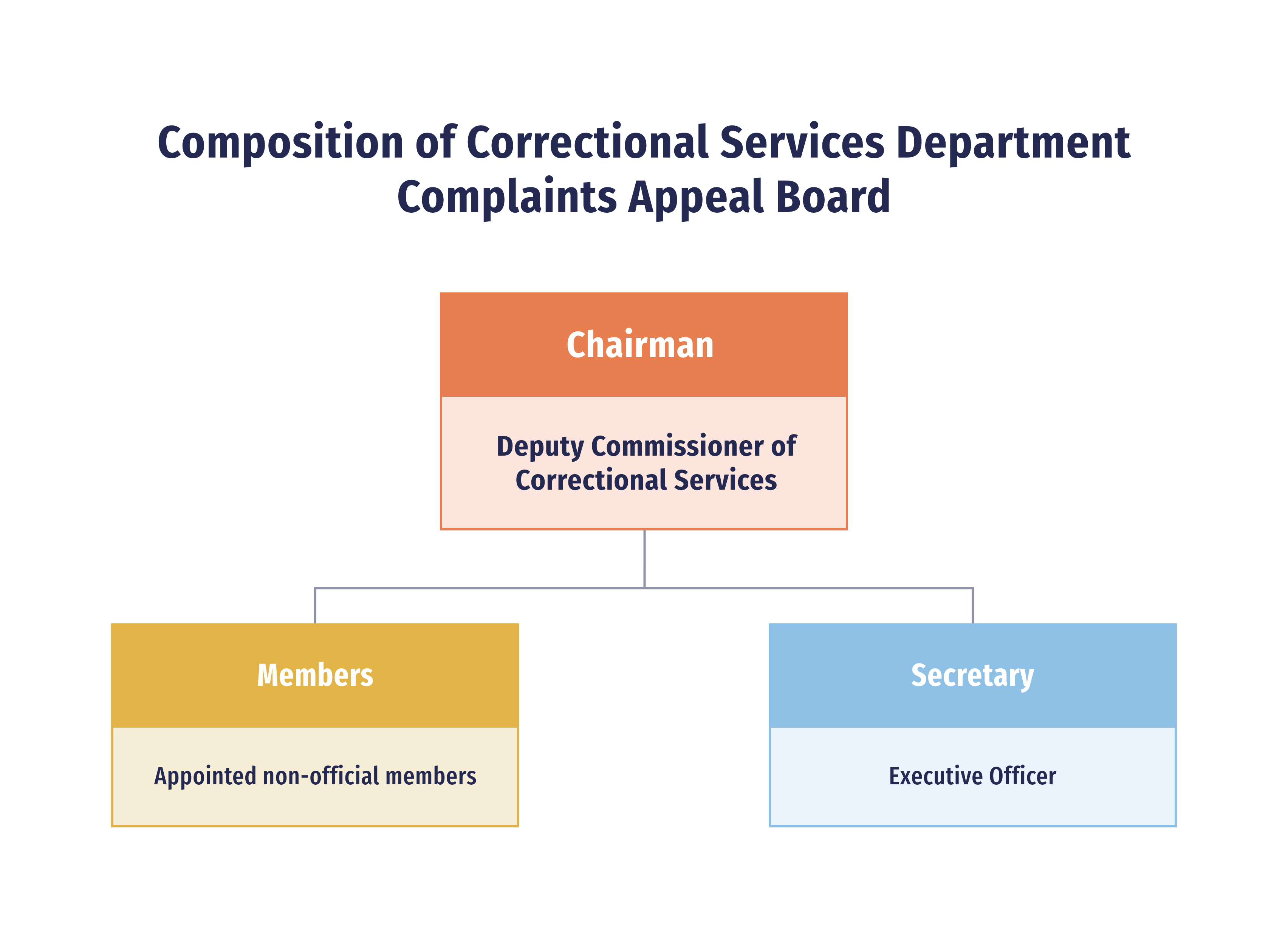Quality Assurance
Quality Assurance
Institutional Security, Monitoring and Inspection
Being steadfast in its role as the last element of the criminal justice system, the CSD has committed itself to maintaining a secure and safe custodial environment for persons in custody to rehabilitate. Following the black-clad violence in 2019, a large number of people suspected to have violated the Hong Kong National Security Law or committed relevant offences (including radicals or those committing serious offences) have been admitted into correctional institutions, thus posing possible threats to institutional stability and order. To prevent radical persons in custody from organising collective actions against the institutional management by abusing the power of the masses like those outside institutions, the Security Sub-unit under the Quality Assurance Division (QAD) has adopted “zero tolerance” and pre-emptive strategies to nip those actions in the bud through an effective intelligence network and frequent search operations.
To combat gambling activities within correctional institutions, during the UEFA European Football Championship in 2021, the Security Sub-unit implemented a series of anti-gambling measures and stepped up its search operations to thwart the concealment of contraband and the smuggling of contraband into correctional institutions by persons in custody to ensure a safe and secure custodial environment. As of 31 December 2021, the Security Sub-unit conducted 229 joint search operations, 11 942 special search operations and 168 night raid operations in various correctional institutions with remarkable results.
Over the years, the Security Sub-unit has been exploring the introduction of new technologies to stamp out the smuggling of contraband into correctional institutions in order to ensure a drug-free environment for persons in custody. Since the introduction of the related technologies, the number of persons involved in smuggling of drugs into correctional institutions has dropped drastically. In 2021, there were 13 cases of drug smuggling.
The Inspectorate Sub-unit under the QAD is responsible for conducting systematic and quality inspections of correctional facilities having regard to the operational risks to ensure departmental policies are followed, rules and regulations are duly complied with, approved procedures and standards are consistently maintained, and resources are put to good use for enhancing efficiency. In the past year, the Inspectorate Sub-unit conducted a total of 4 full inspections, 20 thematic inspections, 27 follow-up inspections, 12 security inspections and 17 surprise visits in various correctional facilities.
To enhance staff members’ ability to carry out search operations and utilise the intelligence network, the Inspectorate and Security Unit has organised job-related sharing and training sessions, including new topics such as the Hong Kong National Security Law, the management of persons in custody with radical thinking and integrity management, etc., and made use of scenario training to strengthen staff members’ ability to deal with emergency situations.
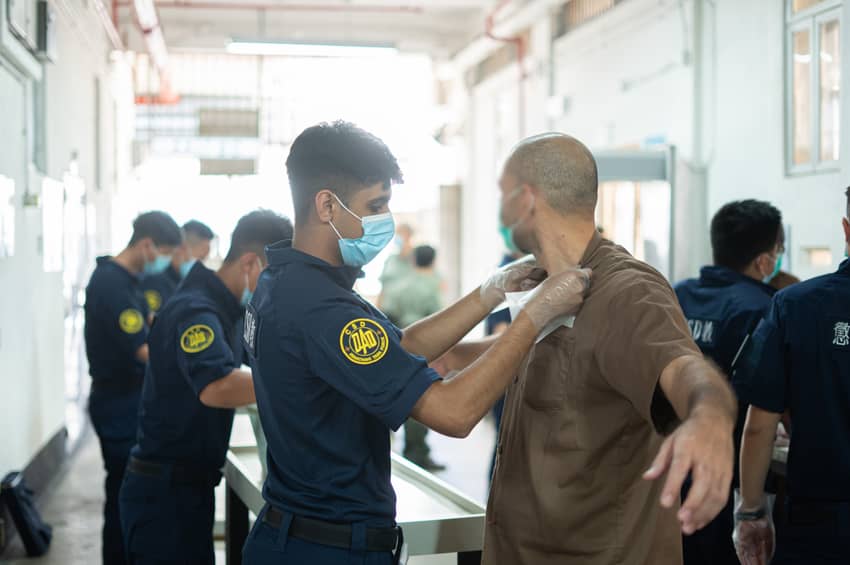
The Security Sub-unit conducts various types of search operations in different correctional institutions from time to time to curb illicit activities within institutions.
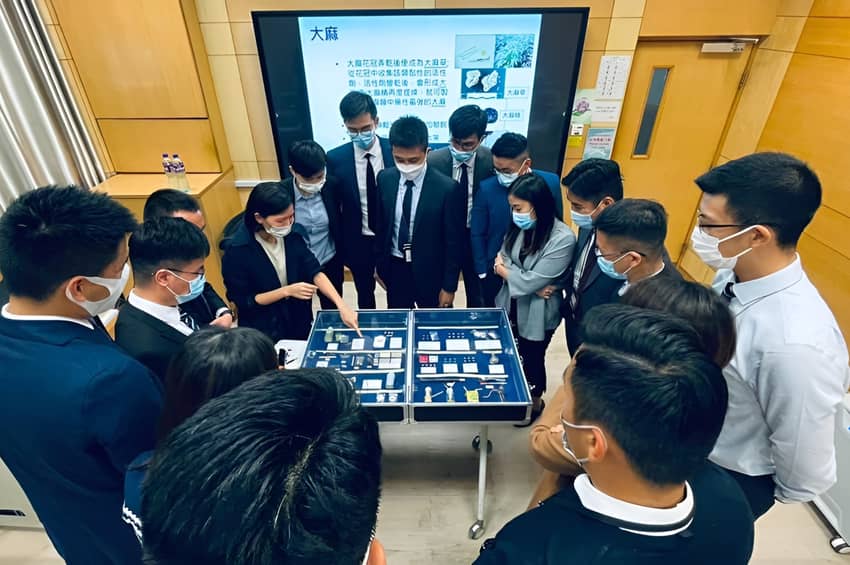
Quality Assurance Officers’ Course
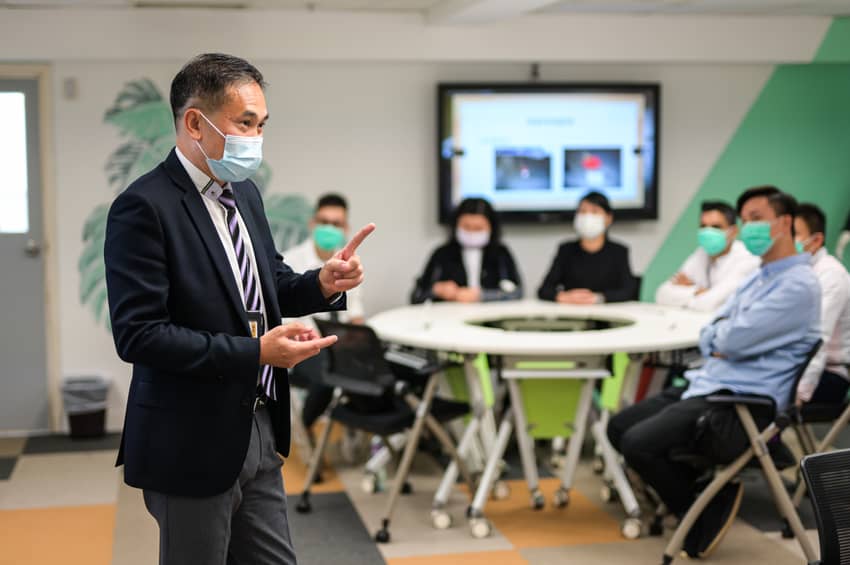
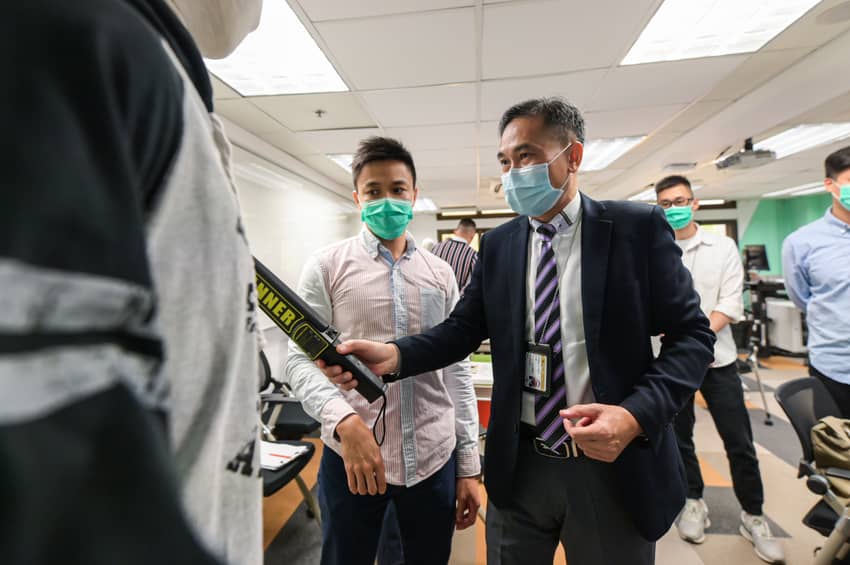
Assistant Officers (Security) Training Course
Research and Application of New Technologies
The Management Services and Research Unit (MSRU) under the QAD keeps exploring how to apply modern technologies to enhance operational effectiveness and efficiency. To more effectively handle troublemakers and strengthen the enforcement capabilities, the MSRU introduced the first batch of metal detector gloves with cut protection in October 2021 for use by staff of the Security Unit during search operations. On detection of any metal objects, the highly sensitive metal detector installed in the palm area will alert staff through vibration, which could raise their searching and detection capabilities.
Furthermore, the MSRU has introduced the first Vehicle Chassis Inspection Robot to Stanley Prison. The robot has a high resolution scanning camera and lighting system on its upper part with the “one-button” automatic inspection function, which can prevent anyone from hiding underneath a vehicle to illegally enter or escape from institutions.
In addition, the MRSU has also introduced a new technology to assist in managing the trees grown inside and in the vicinity of correctional facilities with an aim to facilitate early detection of trees that are at risk of falling or breaking to ensure the safety of staff, persons in custody and institutional facilities. In November 2021, the MSRU collaborated with the Tree Management Office to conduct a trial run of the tree monitoring system funded by the Innovation and Technology Fund in Lai Chi Kok Reception Centre. The system involves sensors installed in targeted trees to transmit signals, including rake and vibration of the trees, to the nearby receivers. Through the technology of Internet of Things, users can then conduct real-time monitoring of the trees on an electronic platform. Besides, in case any potential tree failure is spotted, the system will issue an alert to users.
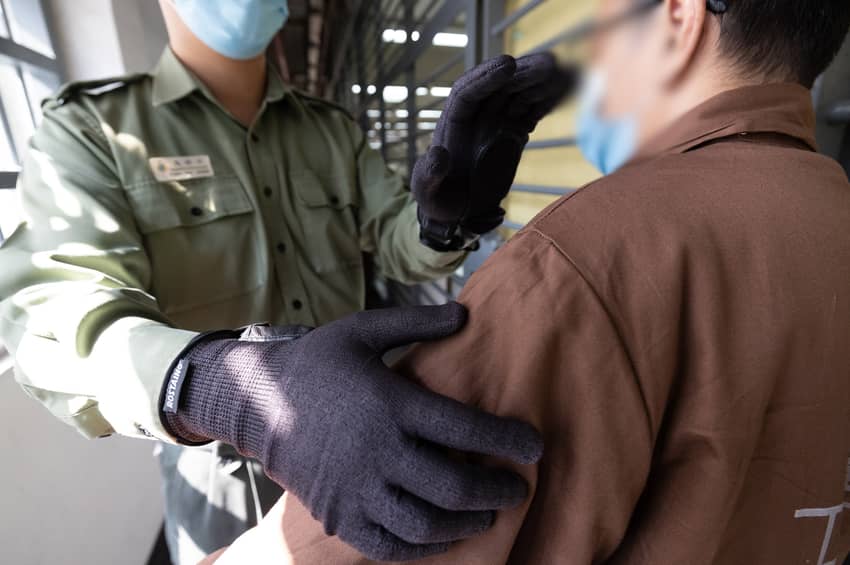
An Officer of the Security Section uses metal detector gloves with cut protection to conduct a search.
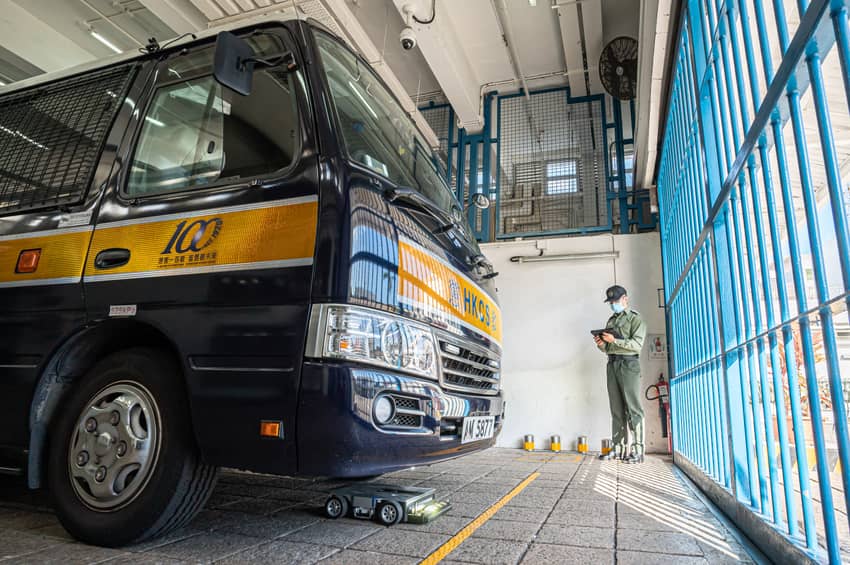
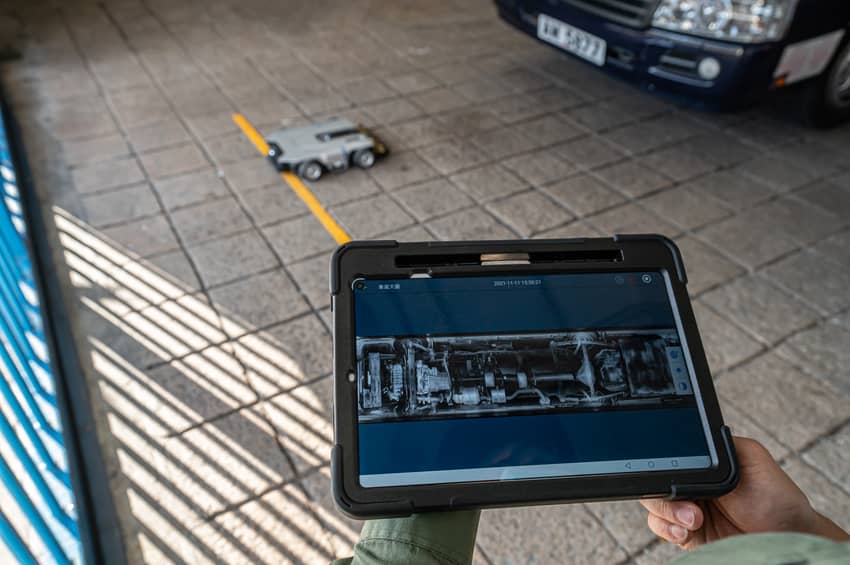
A Vehicle Chassis Inspection Robot performs a security check underneath a vehicle.
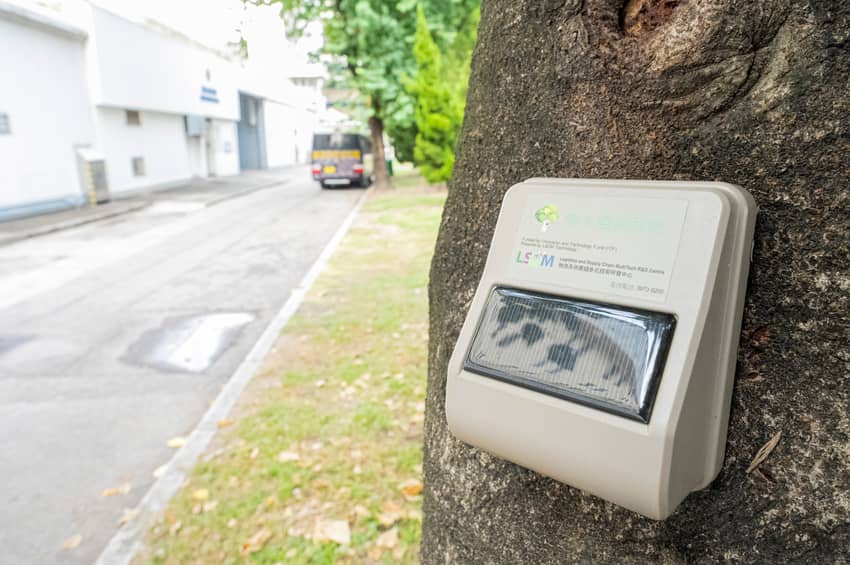
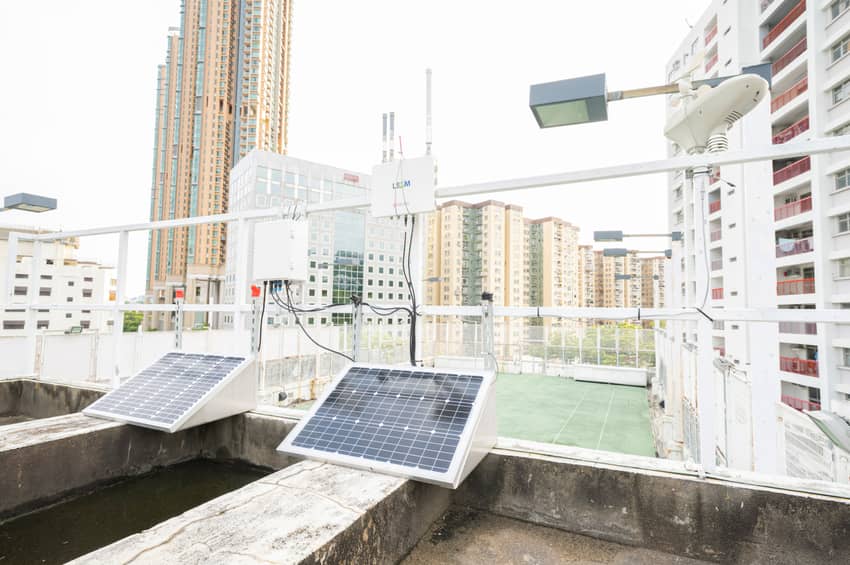
Tree Sensor and Data Receiver of Tree Monitoring System
Counter-Terrorism Work
In recent years, terrorist activities and situations have kept changing, posing grave challenges to global security, including Hong Kong, and some people involved in black-clad violence and serious crimes have also been detained in correctional institutions. In view of the circumstances, the CSD’s Counter-Terrorism Unit (CTU) has been working closely with all member departments of the Inter-departmental Counter Terrorism Unit (ICTU) to deal with issues relating to counter-terrorism (CT). The CTU is committed to minimising the potential risk of terrorism and eliminating the breeding or spread of any terrorist activities in correctional facilities through enhancing the intelligence network and security system.
Since its establishment, the CTU has taken an active role in arranging for correctional officers to participate in CT-related training courses in a bid to enhance their awareness and alertness on CT-related matters so as to ensure a safe and secure custodial environment in institutions. In view of the social situations, the CTU has introduced to the relevant training new topics, including the handling of suspicious objects and explosives.
To enable correctional officers to respond to possible terrorist attacks in the course of duty, the Department and the Hong Kong Police Force (HKPF) organised a series of joint CT exercises in 2021 to test the capabilities of various units and frontline officers in dealing with emergencies, as well as enhance the communication, co-ordination and response capabilities of the 2 departments.
From August to October, the Regional Response Team (RRT) conducted a series of joint CT exercises with the Counter Terrorism Response Unit and the Emergency Unit of the HKPF. The exercises were designed to simulate emergency scenarios which may occur during the escort of terrorists, including malicious obstruction of the escort team by suspicious persons, organised attacks by terrorists, and attempted prison breaks. Officers participating in the exercises needed to make different arrangements with regard to the actual situations, and work closely with their counterparts from other departments during the process so as to make swift deployment and flexible response.
In addition, the CSD and the HKPF conducted an exercise at Lai Chi Kok Reception Centre and its vicinity on 29 October, simulating a variety of scenarios such as the discovery of suspicious objects in the Visitors Registration Room outside the institution, members of the public feeling unwell, distribution of leaflets promoting violence on the street, and attacks attempted by suspicious persons, so as to test and enhance the co-ordination and response capabilities of various sections and operations units under different departments in dealing with crises.
Furthermore, the CTU conducted a large-scale inter-departmental CT exercise jointly with other disciplinary forces at the Hong Kong West Kowloon Station in November. The exercise not only effectively raised the CT awareness of the public, but also enhanced the capabilities of all member departments of the ICTU in coordinating intelligence and making responses in major incidents.
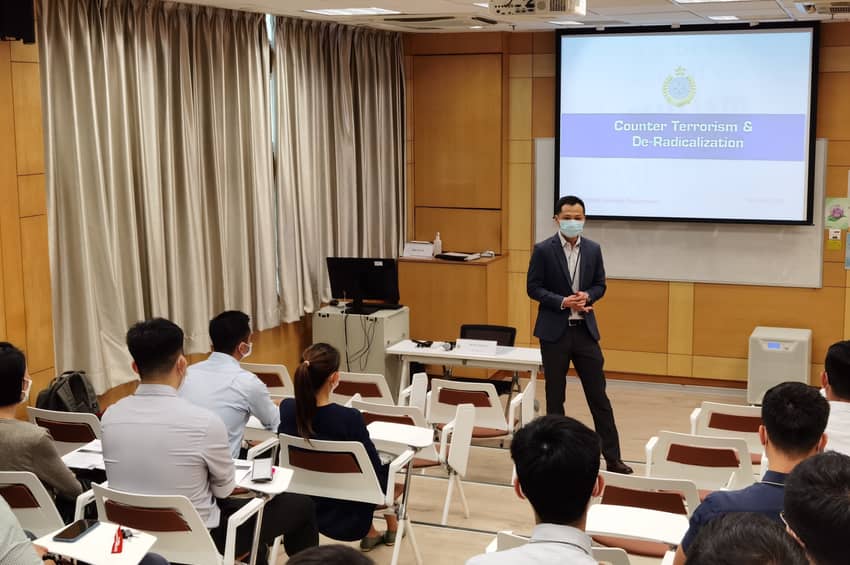
The CTU proactively arranges for correctional officers to attend CT-related training courses.
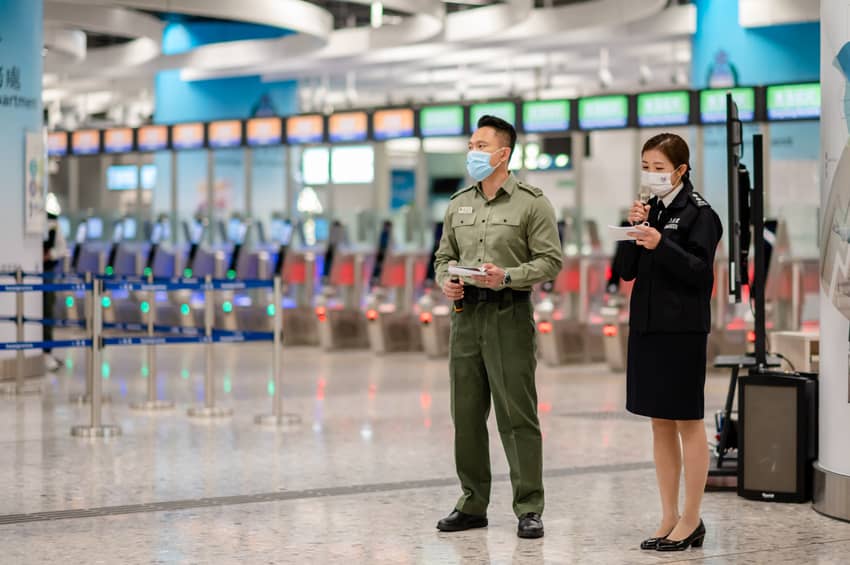
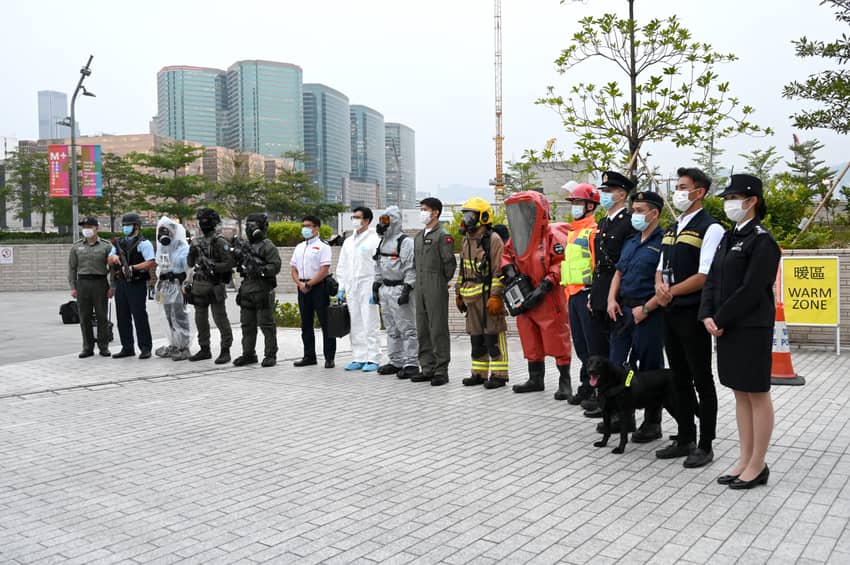
Correctional officers participate in a large-scale CT exercise organised by the ICTU.
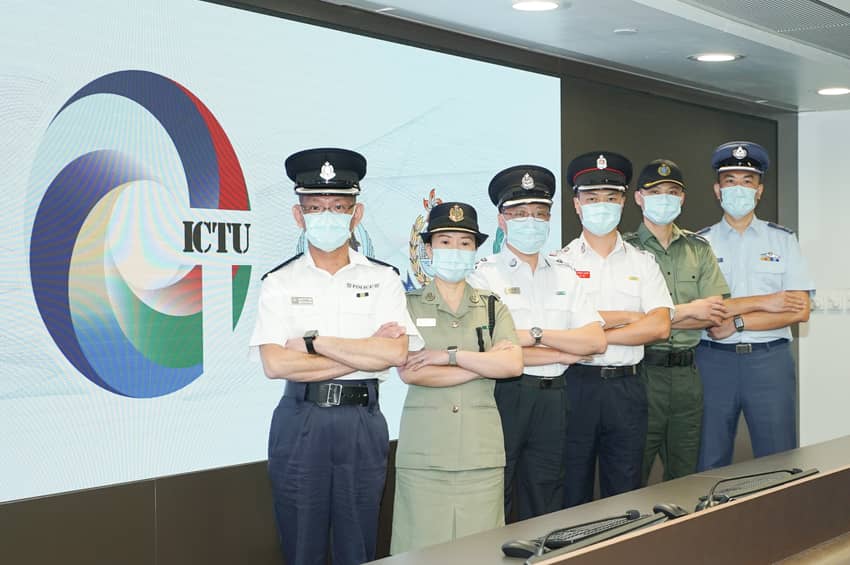
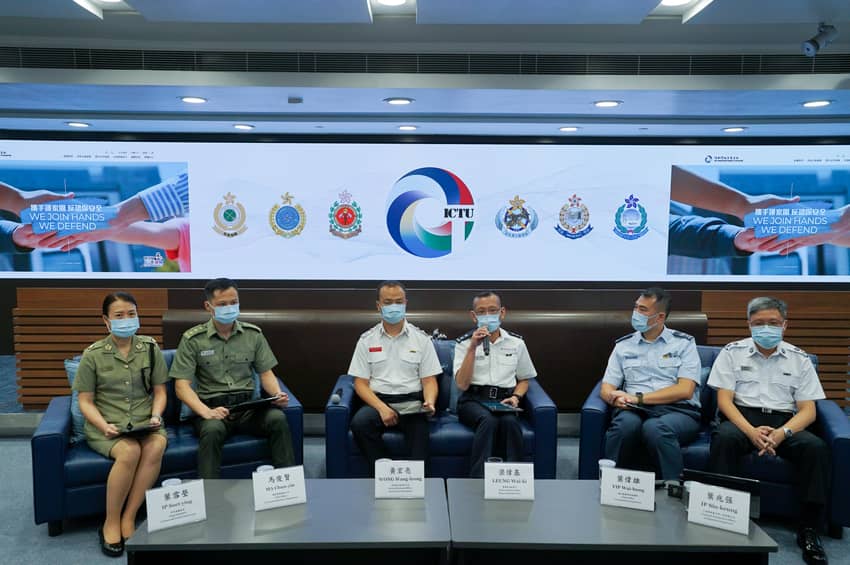
Correctional officers and their counterparts from other member departments of the ICTU disseminate CT messages to the public through a media interview.
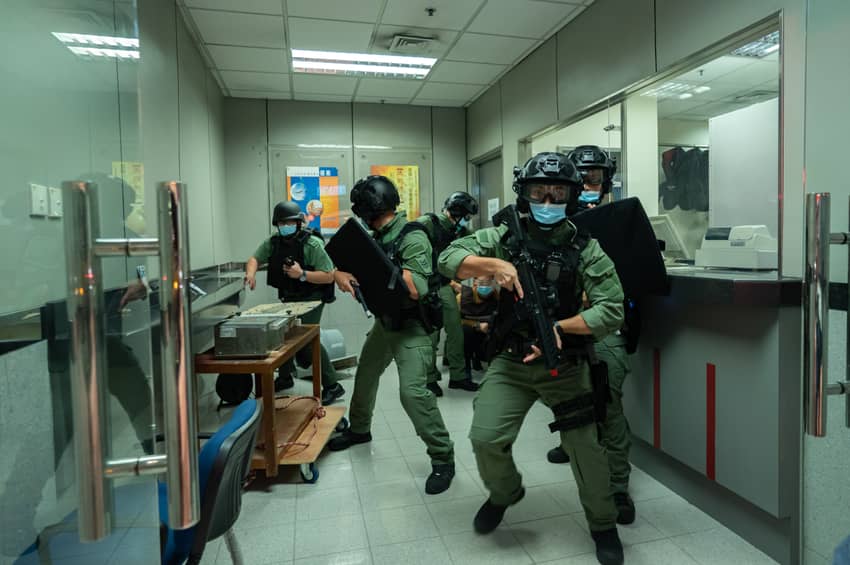
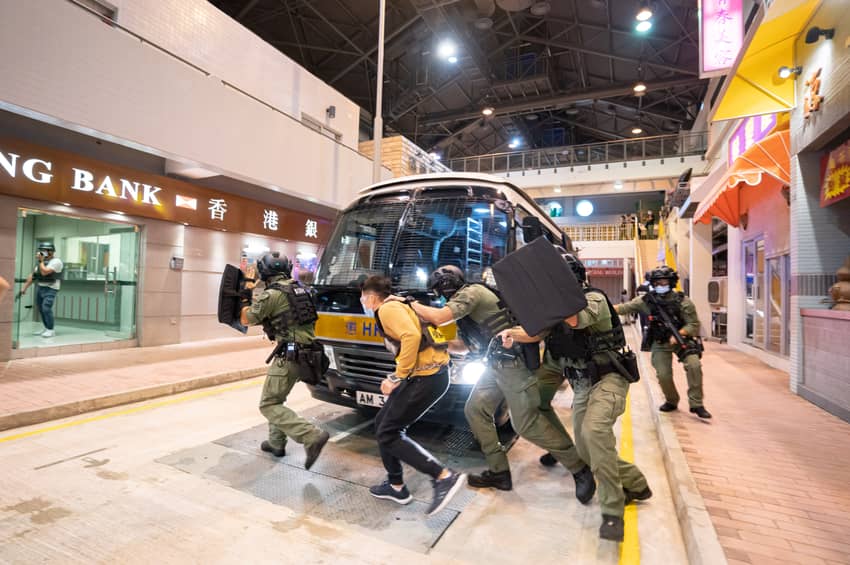
Members of the RRT participate in an inter-departmental CT exercise which simulates emergency scenarios that may occur during an escort operation.
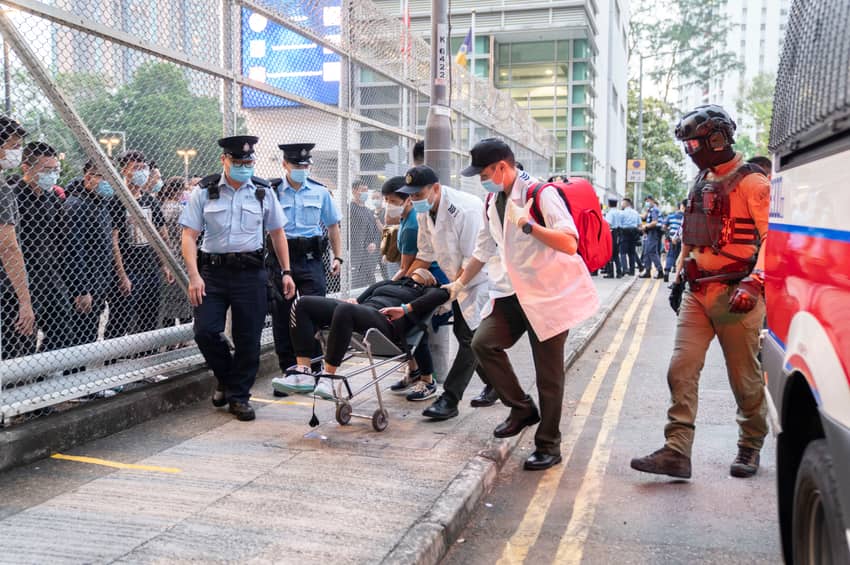
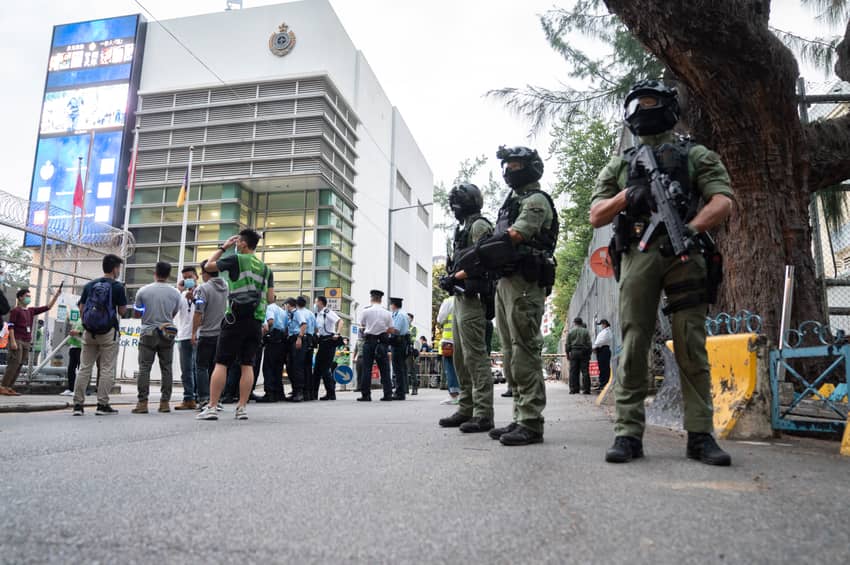
The CSD and the HKPF conduct an exercise outside Lai Chi Kok Reception Centre.
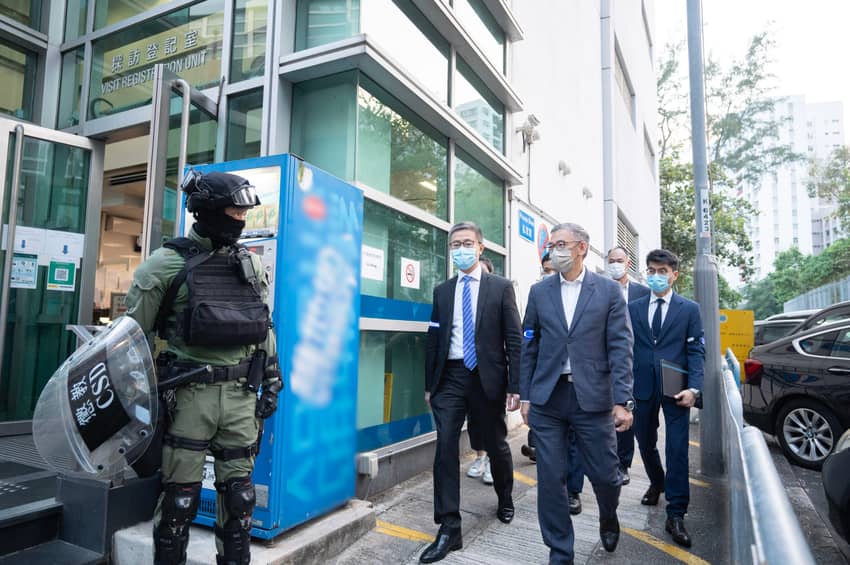
The then Commissioner of Correctional Services, Mr Woo Ying-ming (third left), and the Commissioner of Police, Mr Siu Chak-yee (second left), visit the scene and supervise the exercise in person.
In order to strengthen community education on counter-terrorism and tie in with the “whole-of-community” approach in counter-terrorism, CTU officers worked in close collaboration with other law enforcement agencies by participating in the organisation of an inter-departmental public education event, namely CT@Community Activity Day, at the Fire and Ambulance Services Academy in August 2021, which aimed to convey CT knowledge to the public through various activities.
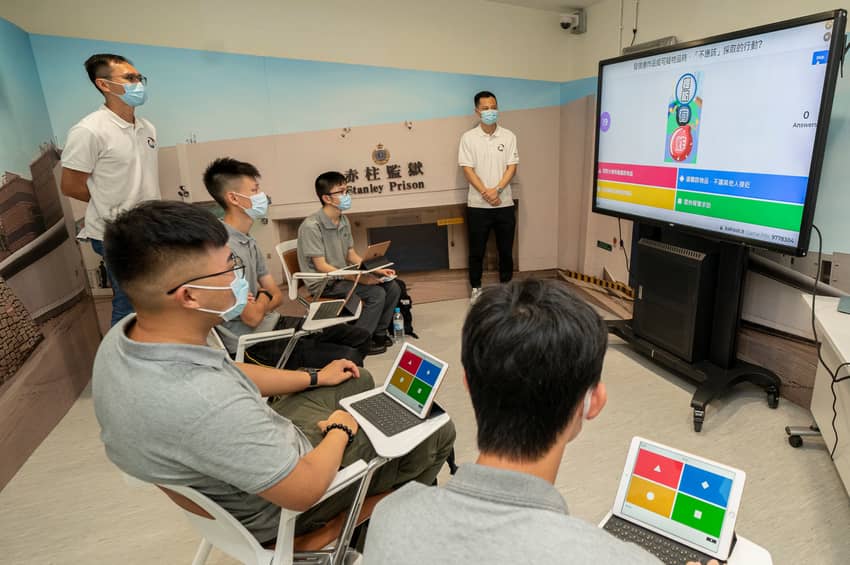
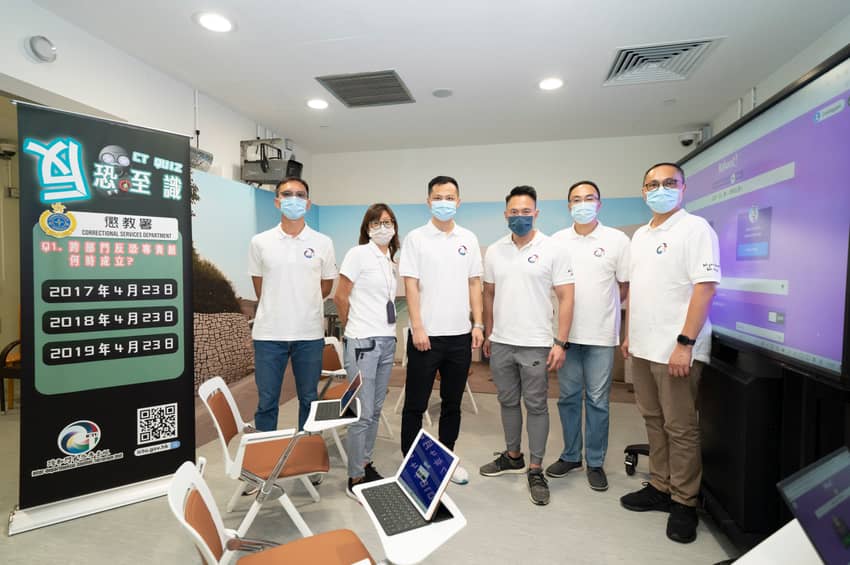
CTU officers participate in the organisation of CT@Community Activity Day, an inter-departmental public education event.
Complaints Investigation Unit
The Complaints Investigation Unit (CIU) is an independent establishment appointed by the Commissioner of Correctional Services. In accordance with the standards under the ISO Quality Management Systems, the unit handles and investigates all complaints within its purview expeditiously, thoroughly and impartially and processes every single complaint in a systematic way, with a view to redressing grievances, preventing similar complaints and continually upgrading its overall service quality.
In 2021, the CIU received 451 complaints/requests/enquiries from persons in custody, members of the public and staff. Among them, 136 complaint cases entailed full investigation by the CIU, 4 complaint cases entailed referral to and handling by institutions under CIU monitoring, and 311 were requests/enquiries. Besides, the Correctional Services Department Complaints Committee (CSDCC) examined and endorsed the investigation reports in respect of a total of 165 complaint cases and made 44 recommendations for service improvement.
The CIU strives to complete each complaint investigation within 18 weeks. For checks and balances, the CSDCC is established to examine the findings of the CIU and decide on the results of the investigations.
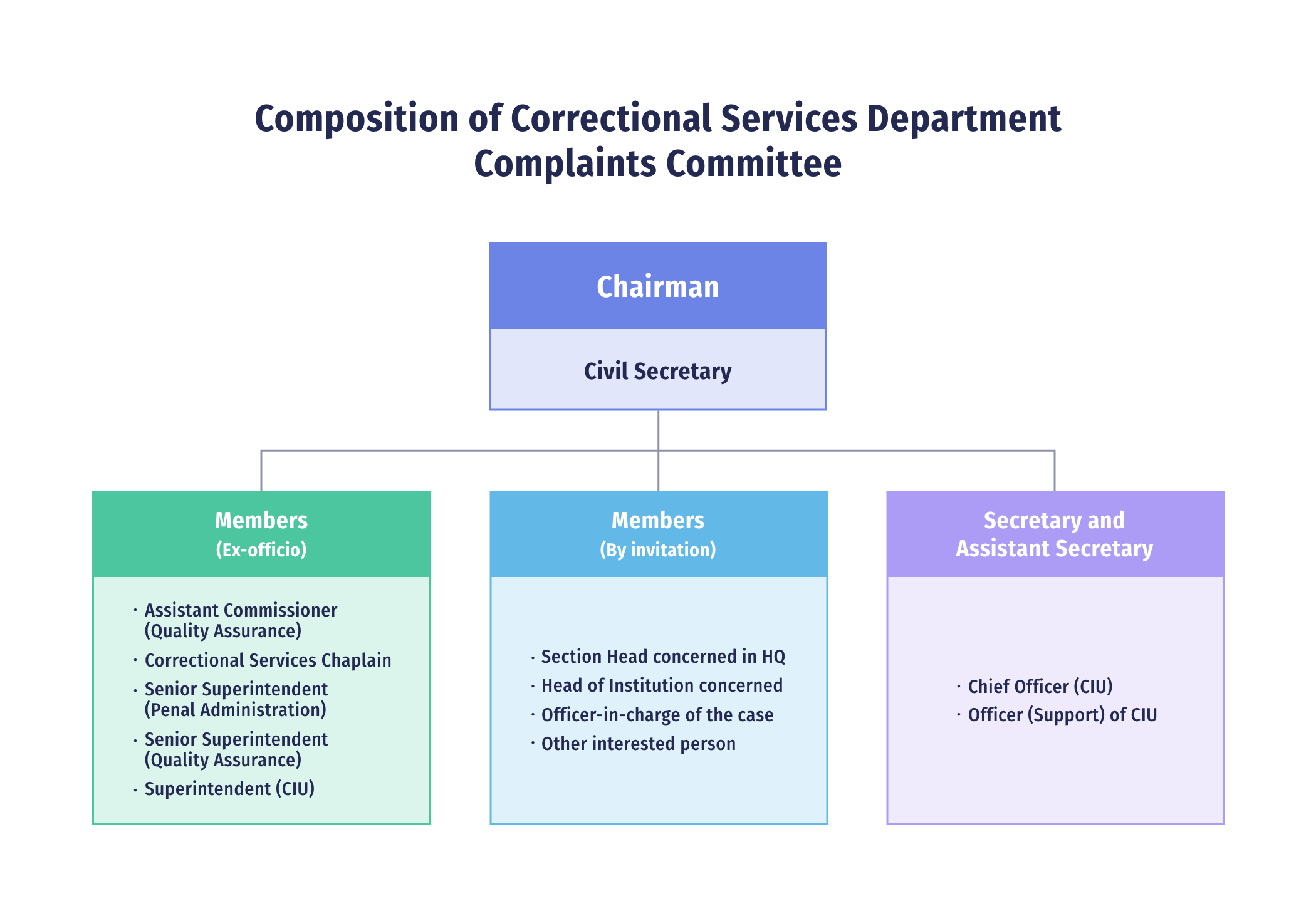
Complainants who are dissatisfied with the investigation results of the complaints may appeal to the Correctional Services Department Complaints Appeal Board (CSDCAB) whose independence can ensure that all appeal cases are handled impartially. In 2021, non-official members of the CSDCAB included 27 Justices of the Peace and 4 religious persons.
